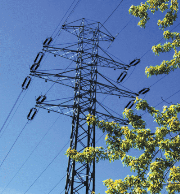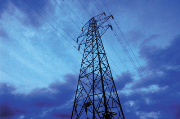 Secure and reliable power is critical in today’s society. However, with the closure of electricity generation and nuclear plants becoming a real threat, there will be a reduction in the spare capacity of energy. So what can businesses do to combat this? Rachel Cooper, energy consultant from Schneider Electric, looks at the benefits of demand response
Secure and reliable power is critical in today’s society. However, with the closure of electricity generation and nuclear plants becoming a real threat, there will be a reduction in the spare capacity of energy. So what can businesses do to combat this? Rachel Cooper, energy consultant from Schneider Electric, looks at the benefits of demand response
The recent political troubles in Libya and the disaster at the nuclear plant at Fukushima are likely to result in price rises and may result in supply capacity problems here in the UK. In addition, Germany has announced plans to shut all nuclear plants by 2022 and the EU has asked all member states to conduct safety checks on nuclear plants. Add to this the closure of coal and nuclear plants due to end of life or greenhouse gas emissions problems, and the UK needs to find ways to fill the supply gap.
While attention and investment is focused on renewable energy sources, facilities such as wind farms may offer a lower carbon solution, but they will result in a less predictable power supply system. When combined with system emergencies, such as loss of power lines or plant equipment failure, the pressure on spare capacity only increases.
To help counter these factors, the National Grid has committed to providing a flexible solution to respond to increased demand and/or decreased supply, by working with customers to provide management instruments that can be used to respond to increased demand on the grid or other factors that affect the availability of supply. These include time-of-use tariffs, maximum demand schemes and, potentially the most valuable, demand response.
Meeting the demand
Demand response, also known as Short Term Operating Reserve (STOR) programme, was introduced in 2007 to create the provision of additional active power from generation and/or demand reduction. Participating organisations are paid to reduce load either through on-site generation, load reduction or a combination of both. This is quickly proving to be one of the best solutions to provide a reliable and stable supply of electricity back to the grid whilst protecting users against loss or reduction of supply.
Key benefits of participation in the demand response programme are revenue for the user and advanced notification of grid stress. The latter ensures that any operation where continuity of supply is critical can plan accordingly. Other benefits include a raised awareness of the importance of energy efficiency within participating organisations and a safeguard for infrastructure, with equipment protected and preserved as energy is being reduced when voltage fluctuations are likely to occur.
 Offering assistance
Offering assistance
Energy management specialists can offer support for organisations looking to participate in the demand response programme. By working with such organisations users can achieve the highest possible reductions, which will result in additional revenue from the programme and reduced energy costs.
The first role of the energy management specialist and the first step in participating in the demand response programme is to conduct a site review to determine suitability, taking in on-site generation facilities and energy consumption. The specialist will then identify the most appropriate strategy which could focus on generation or load management, or a combination of both. A plan will then be developed that will detail how the strategy can be implemented, including what, if any, equipment is required, and which processes or areas of the site can be used as part of the programme.
The National Grid pays participants in the programme according to when they can be available and how often they are called upon. Payments can range from tens of thousands to hundreds of thousands of pounds, according to the amount and timing of energy curtailments. To achieve the maximum availability payment, participants will need to be available for all of the National Grid seasons and timeframes. This amounts to 3,875 hours throughout the year, split into six seasons of varying length. This flexibility gives the National Grid the reassurance that a participant will be available at any given time, hence the higher payment.
The benefits of participating in the demand response programme are threefold. First, where continuity of the power supply is critical to operations it provides a safeguard against interruption of supply. Secondly it has the potential to create a revenue stream for the organisation. And thirdly, its introduction can help to establish a culture of energy efficiency, encouraging facilities managers to ensure that unnecessary power usage is eliminated. This essentially makes demand response a win-win situation, where organisations do not only guarantee protection against loss of power, but also generate revenue and save money by not using energy needlessly.



